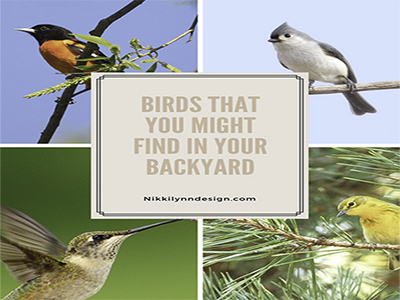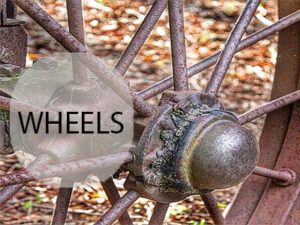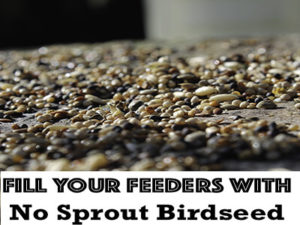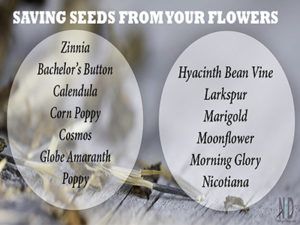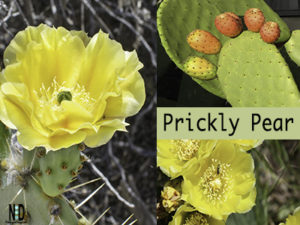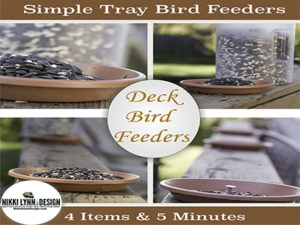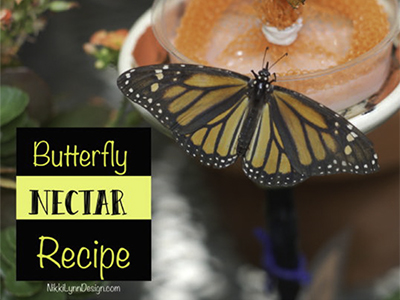Birds You May Find in Your Backyard
A running list of birds that you may find in your backyard along with some interesting facts, and possible additional reading posts that may help you attract them to your backyard.
You Will Find 24 Different Birds Below
Read a little about each of the birds I find in my backyard.
Baltimore Oriole

Baltimore Oriole – (Icterus galbula) is a small icterid blackbird common in eastern North America as a migratory breeding bird. It received its name from the resemblance of the male’s colors to those on the coat-of-arms of Lord Baltimore. Find plenty of Baltimore Orioles on the UWGB campus walking trails every summer and along my berry trees that line the backyard.
Cedar Waxwing

The cedar waxwing eats berries and sugary fruit year-round, including “dogwood, serviceberry, cedar, juniper, hawthorn, and winterberry” with insects becoming an important part of the diet in the breeding season. Its fondness for the small cones of the eastern redcedar (a kind of juniper) gave this bird its common name. They eat berries whole. They sometimes fly over water to catch insects. Pictured is two cedar waxwings sharing a bug.
Eastern Bluebird
![Female Eastern Bluebird - Eastern bluebirds are found east of the Rockies, southern Canada to the Gulf states, and southeastern Arizona to Nicaragua. The increase in trees throughout the Great Plains during the past century due to fire suppression and tree planting facilitated the western range expansion of the eastern bluebird[5] as well as range expansions of many other species of birds. Female Eastern Bluebird - Eastern bluebirds are found east of the Rockies, southern Canada to the Gulf states, and southeastern Arizona to Nicaragua. The increase in trees throughout the Great Plains during the past century due to fire suppression and tree planting facilitated the western range expansion of the eastern bluebird[5] as well as range expansions of many other species of birds.](https://photos.smugmug.com/Wildlife-Collection/Smallbirds1/Small-Birds-Wi/Small-Birds/i-S8kNzvS/20/91a3be80/L/birds2-L.jpg)
Female Eastern Bluebird – Eastern bluebirds are found east of the Rockies, southern Canada to the Gulf states, and southeastern Arizona to Nicaragua. The increase in trees throughout the Great Plains during the past century due to fire suppression and tree planting facilitated the western range expansion of the eastern bluebird as well as range expansions of many other species of birds.
Male Red-bellied Woodpecker

The red-bellied woodpecker is a medium-sized woodpecker of the Picidae family. It breeds mainly in the eastern United States, ranging as far south as Florida and as far north as Canada. Its common name is somewhat misleading, as the most prominent red part of its plumage is on the head.
Female Red-bellied Woodpecker

As with all animals, foraging becomes an important role in an animal’s ability to survive and reproduce. The red-bellied woodpecker expresses foraging behavior by catching or storing food. The woodpecker uses its bill for foraging as a chisel drilling into bark or probing cracks on the trunk of trees. In this manner, the red-bellied woodpecker is able to pull out beetles and other insects from the tree with the help of its long tongue.
Downy Woodpecker

Downy woodpeckers are the smallest of North America’s woodpeckers but there are many smaller species elsewhere, especially the piculets. The total length of the species ranges from 14 to 18 cm (5.5 to 7.1 in) and the wingspan from 25 to 31 cm (9.8 to 12.2 in). They love to eat suet from feeders in the winter. This little guy is currently winter feeding – eating my homemade suet. Enjoy little guy!
Red Bellied Woodpecker

Red-bellied woodpeckers LOVE peanuts. I attract them in winter by adding unshelled peanuts to the feeders. I enjoy watching them take peanuts, one by one. They are interesting to watch.
Hummingbird

They are known as hummingbirds because of the humming sound created by their beating wings which flap at high frequencies audible to humans. They hover in mid-air at rapid wing-flapping rates, typically around 50 times per second, allowing them also to fly at speeds exceeding 15 m/s (54 km/h; 34 mph).

Pine Warbler
Guess where he was found. In a pine tree, imagine that. lol
Additional Warbler Posts:
Warbler Season in Wisconsin
Yellow Warbler Feeding Young Video
Gotta Catch “Em All
Chestnut Sided Warbler

It took me three years to find one in the spring – but I did it. Then, of course, you end up seeing them all summer after that. What a beautiful and quick moving bird.
Purchase on Amazon:
The Warbler Guide
Warbler Assortment Boxed Notecards– Set of 8
Acadian Flycatcher

Well, for sure it is a flycatcher. Am I thinking it is the Acadian? The flycatcher family is a tough nut to crack.
Northern Flicker

Northern flickers generally eat insects, seeds, and berries. During the winter months, I find them eating hulled sunflower seed, berries and suet from my feeders.
Cool Stuff On Amazon:
Motion-Activated Bird Camera
Window Bird Feeder See Wild Birds Up Close!
Wireless Weather Station Temperature and Humidity Gauge, Rainfall, Wind Speed and Wind Direction
Red Winged Blackbird

This guy was sassy! He tried to pull my hair tie out of my hair when I was photographing butterflies. He thought he had a better use for it.
Red Eyed Vireo

The red-eyed vireo is interested in picking insects off the undersides of your leaves and flowers. You will not find them at the feeders but might hear their beautiful song and quick motion when visiting tree to tree. Occasionally, you will find them sitting on a heavy stemmed flower in your gardens.
Goldcrest

Goldcrest – This kinglet has greenish upper-parts, whitish underparts, and has two white wing bars. It has a plain face contrasting black irises and a bright head crest, orange and yellow in the male and yellow in the female, which is displayed during breeding. The goldcrest breeds in coniferous woodland and gardens, building its compact, three-layered nest on a tree branch.
Blue Jay

Young Blue Jay – Blue jays are predominantly blue with a white chest and underparts, and a blue crest. It has a black, U-shaped collar around its neck and a black border behind the crest. Sexes are similar in size and plumage, and plumage does not vary from season to season.
Lesser Redpoll

Another fun feeder bird to watch. Around me, the redpoll birds attack the feeder in groups. Look for a fire engine red colored patch on top of the head and sometimes belly on the redpolls.
Warbling Vireo

Warbling vireos forage for insects in trees, hopping along branches and sometimes hovering. They also eat berries, especially before migration and in winter quarters, where they are – like other vireos – apparently quite fond of gumbo-limbo seeds. Though they will not venture into the human-modified habitat to get them. I haven’t seen one at a feeder, yet. Although, I do see them pass through the yard.
Tufted TitMouse

The habitat for the tufted titmouse is deciduous and mixed woods as well as gardens, parks, and shrubland in the eastern United States; they barely range into southeastern Canada in the Great Lakes region. They are all-year residents in the area effectively circumscribed by the Great Plains, the Great Lakes, the Gulf of Mexico and the Atlantic Ocean. The range is expanding northwards, possibly due to increased availability of winter food at bird feeders.
American Goldfinch

Common feeder bird that enjoys eating sunflower and nyjer seed. During the late summer and fall, they enjoy eating the seeds off garden plants. The American Finch, Common Redpolls, and Pine Siskins normally pack together for the winter months. The coloring of the American Goldfinch is a bright yellow during the spring and dulls, going into winter.
Cooper’s Hawk

The backyard feeder birds are an easy target for hawks, they will stand back and watch the songbirds eat their fill and then strike them in flight as they leave.
Male Common House Finch

The house sparrow is strongly associated with human habitations and can live in urban or rural settings. Though found in widely varied habitats and climates, it typically avoids extensive woodlands, grasslands, and deserts away from human development. It feeds mostly on the seeds of grains and weeds, but it is an opportunistic eater and commonly eats insects and many other foods.
Buy On Amazon:
Backyard Guide to the Birds of North America
The Backyard Birdsong Guide Eastern and Central North America: A Guide to Listening
Audubon Bird Call – Chirps and twitters to imitate bird calls
Grey Catbird

This species is named for its cat-like call. Like many members of the Mimidae (most famously mockingbirds), it also mimics the songs of other birds, as well as those of Hylidae (tree frogs), and even mechanical sounds. Because of its well-developed songbird syrinx, it is able to make two sounds at the same time. The alarm call resembles the quiet calls of a male mallard. The catbird can also make a terrible sounding scream when you are close. They scare the crud out of me at times.
The birds will stay over winter if they have a well-stocked feeder with plenty of berries and seed.
Common Grackle

The grackle looks black from a distance. Until you get up close and see the glossy-iridescent body. I think they are rather pretty but they can be bullies and travel in packs, cleaning out feeders in an instant.
If you have issues with them, hang tube feeder with Nyjer seed and feed safflower seed in hoppers. Crows, grackle, and squirrels dislike safflower seed.
Female Rose Breasted Grosbeak

Grosbeaks, in general, eat the same food. Like visiting yards that have nut and berry trees planted on the grounds and for foraging for insects in and around the yard and gardens.
At feeders, they enjoy eating sunflower and safflower seed and raw peanuts. Once in a while they will take a nip at the suet. Some people have had better luck than I at having grosbeaks eat their fill of suet.
Order Off Amazon for Grosbeaks:
Kaytee Safflower Seed for Cardinals, Chickadees, Nuthatches, Grosbeaks
Classic Peanut/Sunflower Seed Feeder, X-Large
Kaytee Mealworms for Nuthatches, Grosbeaks, Robins, Chickadees & Titmice
Male Rose Breasted Grosbeak

The rose-breasted grosbeak (Pheucticus ludovicianus) is a large seed-eating grosbeak in the cardinal family (Cardinalidae). It is primarily a foliage gleaner. It breeds in cool-temperate North America, migrating to tropical America in winter.

This page contains affiliate links read about it if you wish here.
Image Licensing HERE
